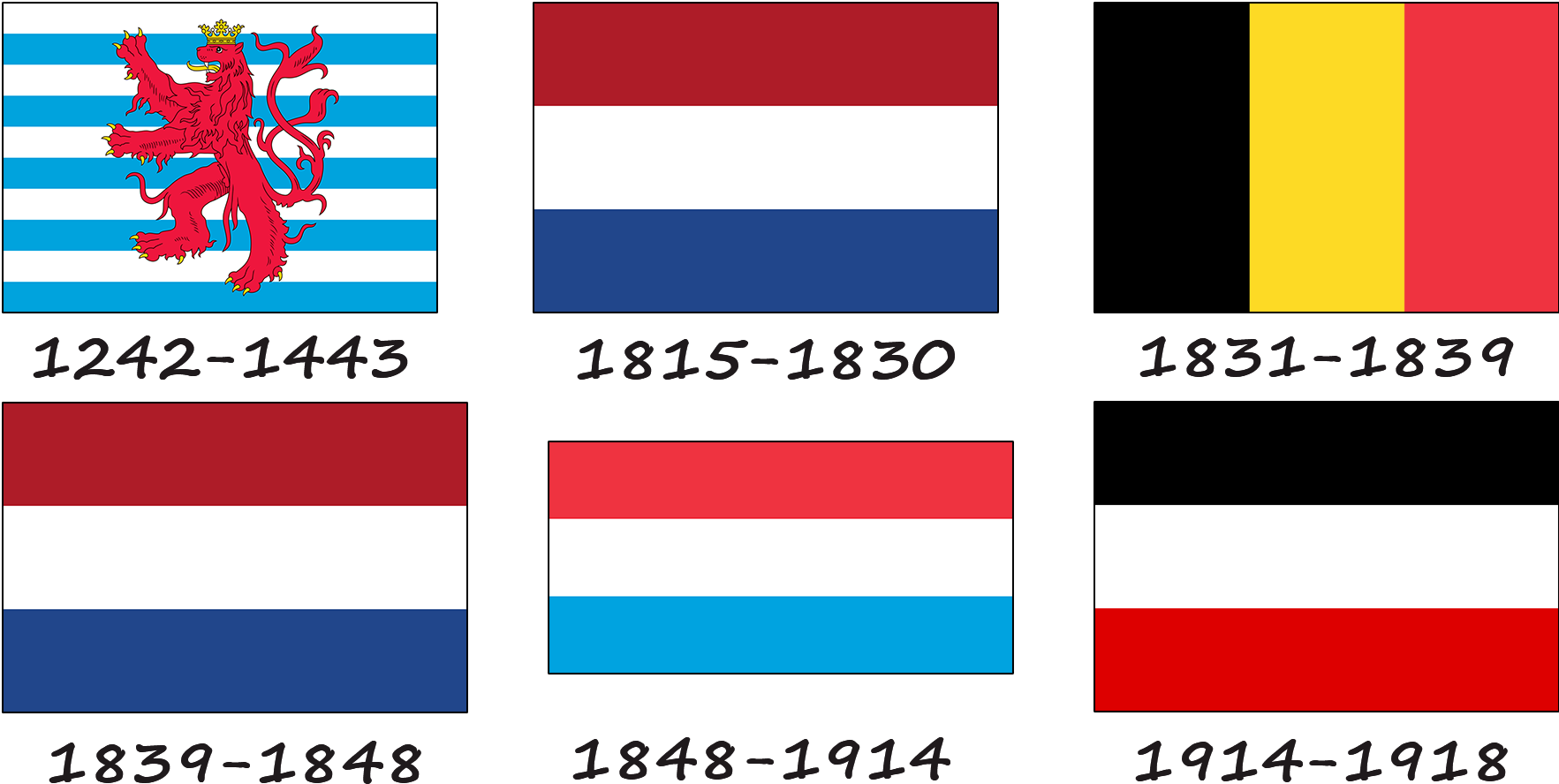The colors of Luxembourg have been known since the Middle Ages. The first flag was raised by Count William of Luxembourg in 1123 and had a horizontal stripe, probably yellow and red. Count Henry V of Luxembourg used a white and blue striped coat of arms and a flag with a red crowned lion in 1240. In 1815, Willem, King of the Netherlands, became Grand Duke of Luxembourg and adopted the flag of Luxembourg. It was identical to the official flag of Holland (the unofficial name of the Kingdom of the Netherlands). However, the historical origins of these two flags are different. The reign of William I affected Luxembourg, and the "province" had to take part in the Belgian Revolution of 1830. The flag of Belgium was adopted in 1831 and is the official Belgian flag today, but it was the flag of Luxembourg until 1839, after which they returned to using the Dutch flag. In 1848, the flag of Luxembourg appeared for the first time in the form in which we know it today. The light blue color was chosen to distinguish it from the flag of the Netherlands. The choice of the striped flag was probably influenced by the French Revolution. At that time, many national flags used the tricolor as a symbol of freedom. In the period from 1914 to 1918, the flag of the German Empire was used, which consisted of three equal horizontal stripes of black (top), white and red (bottom) colors.

However, the red-white-and-blue tricolor became the national flag of Luxembourg only in 1972 and was used in this form until 1993, after which the aspect ratio was changed from 1:2 to 3:5, while the colors remained unchanged. Thus, the flag has been de facto used since 1972, but was officially adopted only in 1993.
The Red Lion flag is the symbol for the civil courts of Luxembourg. It consists of a red lion on its hind legs against a background of horizontal stripes of five white and five blue stripes. The lion has a golden crown on its head, and its tongue and claws are also colored gold. The coat of arms of the Grand Duchy of Luxembourg also has a red lion that adorns a shield with a ducal crown.
The replacement of the Luxembourg flag with the red lion flag was proposed by the head of one of the parliamentary groups. The vast majority of the country's citizens expressed their support for his proposal. In a poll conducted by a radio station, ninety percent of people voted in favor of adopting the red lion flag as the national flag. This banner, dating back to the 13th century, used to be the ancestral flag of the House of Luxembourg. However, MPs are in no hurry to pass a new law on the national flag of Luxembourg, and discussions continue on whether the Red Lion can replace the current tricolor on the country's flagpoles.






